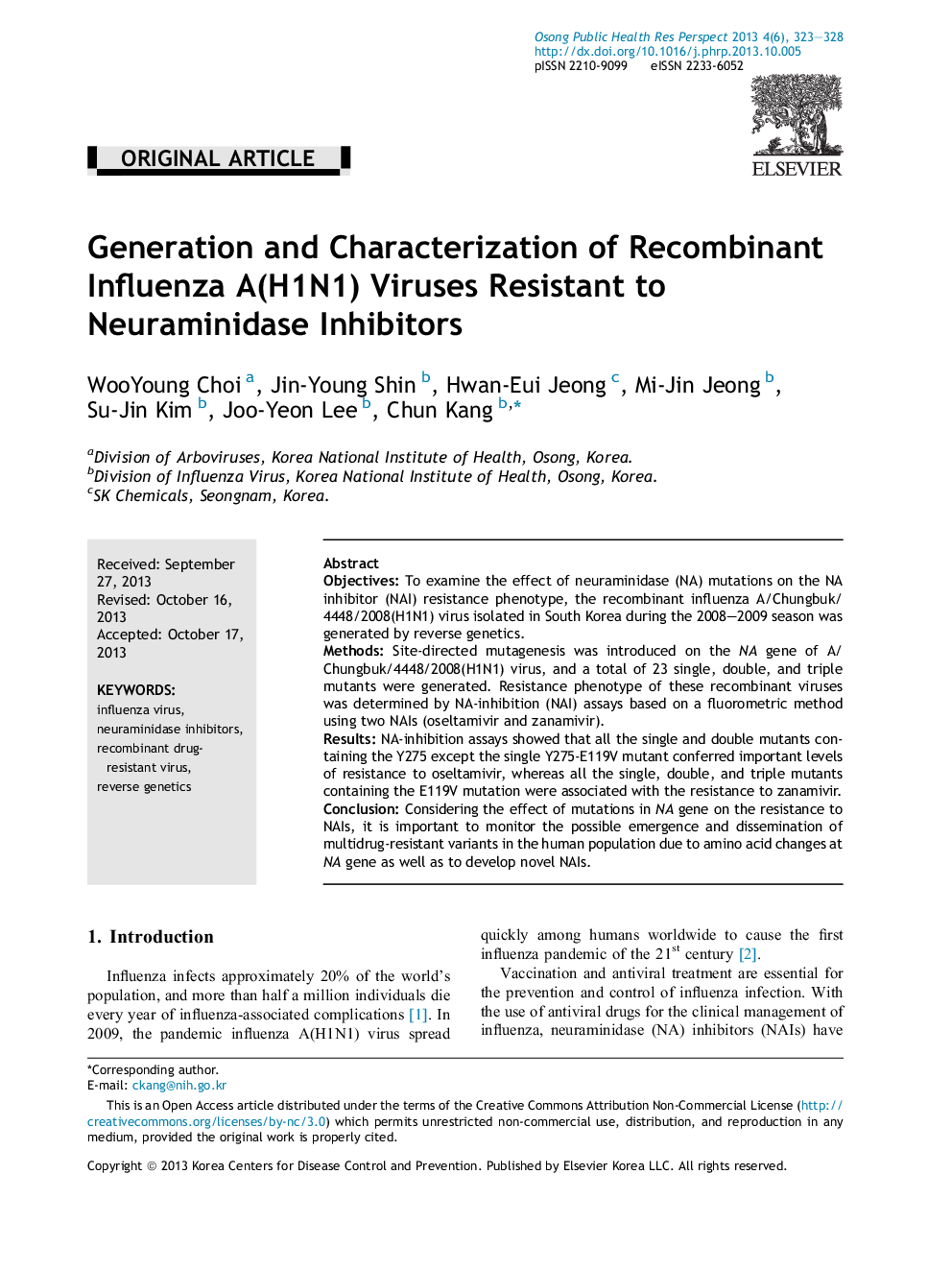| Article ID | Journal | Published Year | Pages | File Type |
|---|---|---|---|---|
| 4202168 | Osong Public Health and Research Perspectives | 2013 | 6 Pages |
ObjectivesTo examine the effect of neuraminidase (NA) mutations on the NA inhibitor (NAI) resistance phenotype, the recombinant influenza A/Chungbuk/4448/2008(H1N1) virus isolated in South Korea during the 2008–2009 season was generated by reverse genetics.MethodsSite-directed mutagenesis was introduced on the NA gene of A/Chungbuk/4448/2008(H1N1) virus, and a total of 23 single, double, and triple mutants were generated. Resistance phenotype of these recombinant viruses was determined by NA-inhibition (NAI) assays based on a fluorometric method using two NAIs (oseltamivir and zanamivir).ResultsNA-inhibition assays showed that all the single and double mutants containing the Y275 except the single Y275-E119V mutant conferred important levels of resistance to oseltamivir, whereas all the single, double, and triple mutants containing the E119V mutation were associated with the resistance to zanamivir.ConclusionConsidering the effect of mutations in NA gene on the resistance to NAIs, it is important to monitor the possible emergence and dissemination of multidrug-resistant variants in the human population due to amino acid changes at NA gene as well as to develop novel NAIs.
